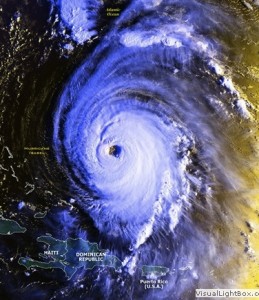Chinese weather satellites to the rescue?
NOAA has been keeping the wraps on a report that suggests coping with a potential gap in American satellite coverage by using Chinese weather satellite data. The report, which was completed in February, describes the Chinese data as a possible “silver bullet” solution to the problem of aging U.S. satellites and slower than expected deliveries of successors.
Last year, NOAA asked Riverside Technology of Fort Collins, Colo., to look for a way out of the coverage conundrum. Riverside recommended that the U.S. negotiate with China to receive data from its Feng Yun 3 series of weather satellites. It said NOAA should start work “immediately with the (U.S.) security community” to figure out how to receive and process the data securely.
A copy of the report, “JPSS Gap Mitigation Analysis of Alternatives,” was provided to Deep Dive. A NOAA spokeswoman said she would have to research whether NOAA has taken any actions because of the report.
Why all the hand-wringing over a possible coverage gap? Existing NOAA polar-orbiting weather satellites will be beyond their expected design lives when the U.S. launches the first Joint Polar Satellite System spacecraft, called JPSS-1, in 2017. The Defense Department has its own polar orbiters, but they are old, with no replacements on the horizon. On top of that, no single constellation, whether military or civilian, provides the complete coverage required by forecasting models.
A coverage gap would impact civilian, military and intelligence work by degrading weather forecasts, one expert said. FEMA needs to accurately preposition supplies before hurricanes. The National Weather Service needs polar orbiters to forecast weather in Alaska and the Arctic latitudes, where geosynchronous weather satellites can’t see. The National Reconnaissance Office needs to decide how to gather cloud-free images with its spy satellites. The military services and CIA need to know the weather before planning risky missions.
The Riverside team touts the Chinese data option as the best choice out of 144 ideas submitted by experts from the U.S. government, universities and the private sector.
“The Riverside team views this idea as potentially the sole silver bullet among the ideas, one that would require a partnership with the Chinese to allow the use of the Feng Yun 3 data,” according to the report.
China plans to launch the next versions of its Feng Yun satellites this year and next, according to the report.
Using weather data from China would be controversial, judging by the dust up in Congress earlier this year over the revelation that the Pentagon indirectly leased communications satellite capacity from a satellite owned partly by China. In this case, the American industry is also chomping for new high-tech business to fill the gap.
But Riverside’s program manager for the study, George Smith, tells Deep Dive that using weather data supplied by a competing nation would not be unprecedented.
“The U.S. and Cuba have exchanged weather information for many, many years to support hurricane forecasting,” he says. “At some point, hopefully people get past the political issues for the sake of health and safety.”
Polar-orbiting satellite coverage is already something of an international affair. The world relies on NOAA’s satellites to cross the equator in sync with afternoon sunlight around Earth. The U.S. military covers the early morning orbit, and European satellites cover the mid-morning obit.
The Riverside authors were not naïve to the politics of turning to China for a critical capability like weather forecasting.
The Feng Yun satellites gained notoriety in January 2007 when China destroyed one of them in orbit to demonstrate the country’s anti-satellite prowess. The U.S. and other countries vehemently condemned the ASAT missile test as provocative and irresponsible. The intercept increased global orbital debris by about 10 percent, according to a 2007 report by the Council on Foreign Relations.
The U.S. followed China in 2008 by downing a malfunctioning U.S. spy satellite over the Pacific Ocean. The U.S. intercepted the satellite at a lower orbit, which limited orbital debris.
Whether the U.S. would be ready to partner with China given that history and amid an alleged espionage offensive is at best an open question.
“Political acceptance of using China’s data operationally is unknown,” the Riverside authors note.
If a weather partnership were reached, American forecasters would get “nominally the same information” they would get from JPSS-1. The data also would be about the same as that from the JPSS pathfinder spacecraft, called SNPP for the Suomi National Polar-orbiting Partnership. It was launched in October 2011 with a five-year design life.
In reality, the U.S. might already be on the path to using Chinese weather data. The report notes that the Alaska Region office of the National Weather Service is “receiving Chinese and Russian data and should continue to do so.” The data comes via the University of Alaska’s Geographic Information Network of Alaska, according to the report.
Also, the European Centre for Medium Range Weather Forecasts has been trying out Chinese weather data in case it needs to use it to fill the gap.



